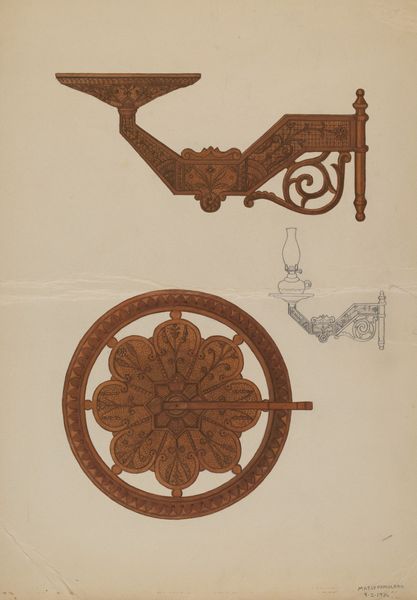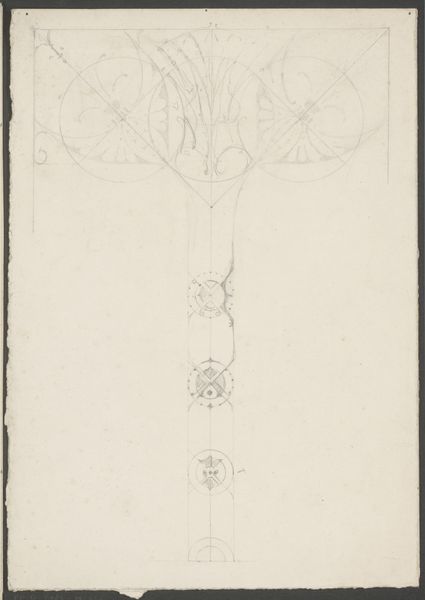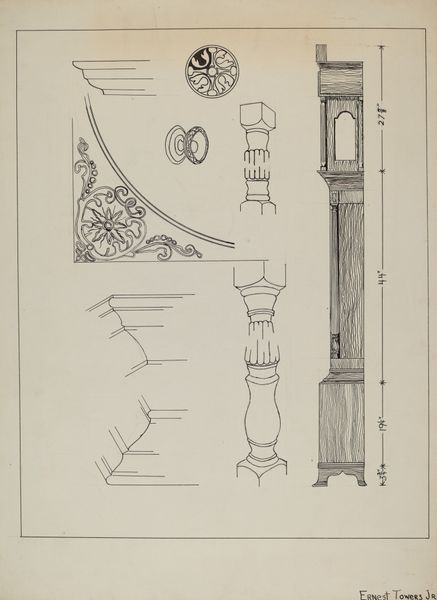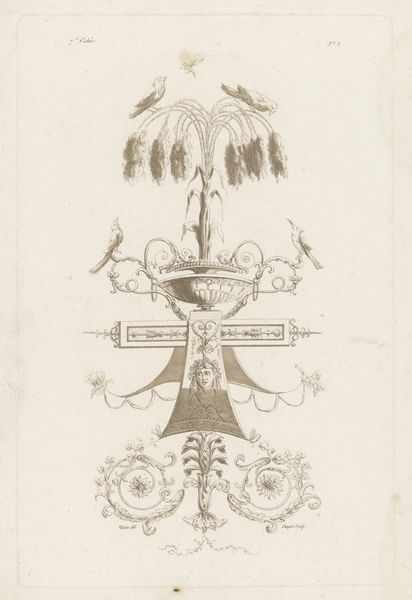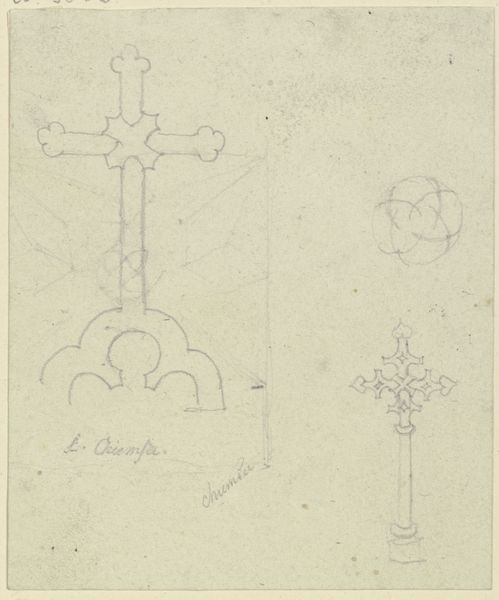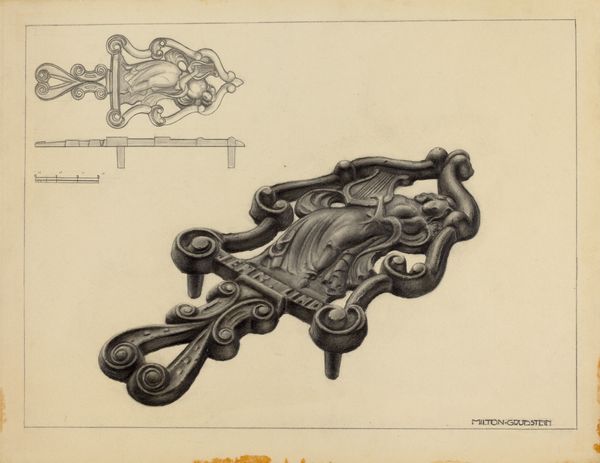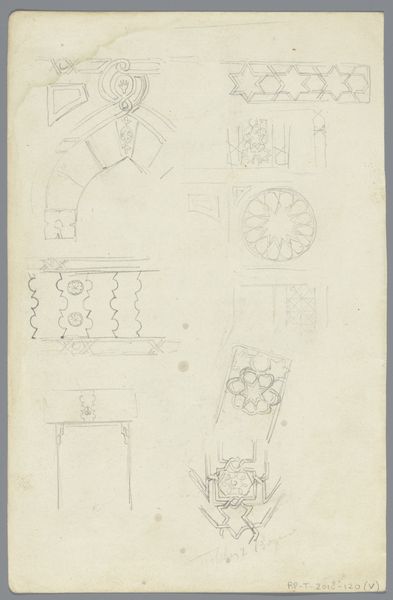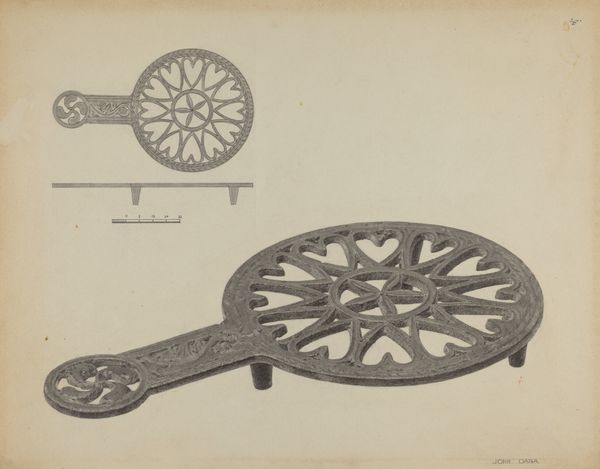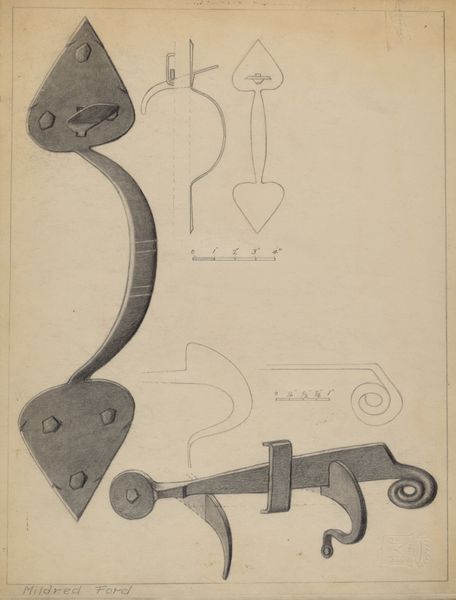
drawing
#
drawing
#
toned paper
#
light pencil work
#
pencil sketch
#
personal sketchbook
#
idea generation sketch
#
sketchwork
#
ink drawing experimentation
#
pen-ink sketch
#
sketchbook drawing
#
sketchbook art
Dimensions: overall: 29.2 x 22.9 cm (11 1/2 x 9 in.)
Copyright: National Gallery of Art: CC0 1.0
Curator: What we have here is Marie Famularo's "Lamp Bracket," a pencil sketch created in 1937. It's interesting, capturing both functional design and intricate detailing in what appears to be a study or perhaps a proposal. Editor: Immediately, the precision strikes me. It's not just a drawing; it's a vision of elegance, almost ornamental, contrasted against the utilitarian nature of, well, a lamp bracket. It evokes an interesting dialogue about class and domestic aesthetics in the late 1930s. Curator: Exactly. Looking at the rendering style, with its light pencil work and toned paper, one gets the feeling this piece was part of an industrial design education initiative of some kind. Such precision was required to have a design prototyped and mass produced. The degree of embellishment would need to be carefully costed in any production plan. Editor: It also highlights the aspirations of the everyday, doesn't it? To embed beauty into the functional, and therefore make beauty accessible. Yet, one wonders who was intended to enjoy this beauty? Were these brackets destined for wealthier homes, perpetuating inequalities through design itself? Or were they conceived as a means to elevate the living spaces of the working class? Curator: Those are vital questions to consider when contextualizing design of the era. We need to recognize, also, the influence of the Arts and Crafts movement in the creation of works such as this, though this may be a more streamlined version than that movement might advocate. The designs integrate floral and geometric forms—that's key. How is nature idealized, controlled, presented within domestic space? What impact does it have on the social role of that space? Editor: I think its value extends beyond pure functionality, especially given today’s context, more than 80 years on. It's about aspirational symbolism, about investing dignity into the domestic sphere for the people who were tasked with managing and caring for it. Who were likely to be working-class women. A quiet rebellion, perhaps, against the starkness often associated with functional design. Curator: It's fascinating to trace how these sketches operate within a broader landscape of design history and social commentary. Editor: Indeed. Examining art objects like this helps us understand how the mundane items we take for granted were, and still are, subject to intricate social and political forces. Thanks to Famularo's piece, we get to re-imagine such hidden systems of knowledge.
Comments
No comments
Be the first to comment and join the conversation on the ultimate creative platform.
